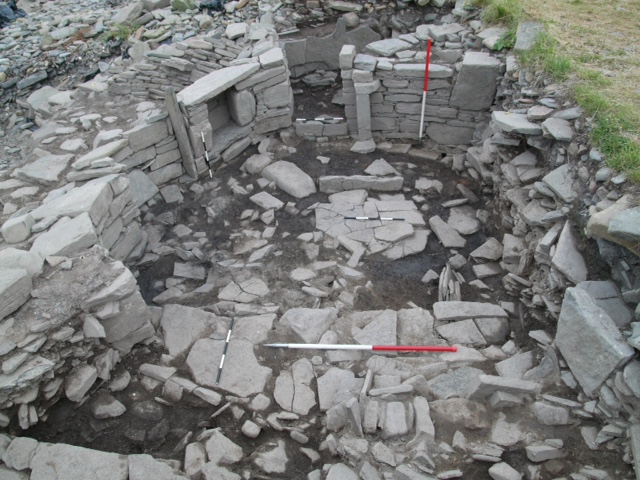Archaeologists battle against time to uncover hidden truth on Scottish island of Rousay in Orkney
Orkney (Scottish Gaelic: Arcaibh), is an archipelago situated off the north coast of Scotland. Orkney comprises of approximately 70 islands, 20 of which are inhabited. The islands have been inhabited for over 8500 years. Originally occupied by Mesolithic and Neolithic people and then by their descendants the Picts. Orkney was settled by the Norse and came under the control of Norway in 875 before being annexed by the Kingdom of Scotland in 1472.
Orkney is famous for being the home to some of the oldest and best-preserved Neolithic sites in Europe. The "Heart of Neolithic Orkney" on Mainland, the main island of Orkney, is a designated UNESCO World Heritage Site and has a group of remarkable Neolithic monuments. They include Maeshowe, a chambered cairn and passage grave, aligned so that its central chamber is illuminated on the winter solstice. The Standing Stones of Stenness. Ring of Brodgar stone circle, which is 104 metres in diameter and Skara Brae, Northern Europe’s best-preserved Neolithic village.
Much remains undiscovered on the islands of Orkney. Often it is only by chance that long held secrets are uncovered, such as when a winter storm in 1850 revealed the 5000 year old preserved village at Skara Brae. It is a similar story at Swandro on the small island of Rousay (Old Norse: Hrólfsey meaning Rolf's Island). In 2010 Dr Julie Bond noticed a few odd stones among the pebbles which later became identified as an ancient settlement. Since then excavations have sought to gain an understanding of this site. However, it has been a race against time as rising sea levels and winter storms continue to threaten the site. Global warming, the effects of climate change and melting polar ice is leading to higher sea levels and changing weather systems, which is exacerbating an already existing problem.
It is in this context that some outstanding archaeological work has been undertaken at Knowe of Swandro. The Swandro - Orkney Coastal Archaeology Trust, a Scottish Charitable Incorporated Organisation, was set up by the excavation team and supporters of the Swandro excavation and environs. As pointed out on the Swandro - Orkney Coastal Archaeology Trust website they have worked relentlessly to raise the money necessary to excavate and record Swandro. No easy task when every winter the Atlantic gales take more of the site which has a largely undisturbed Neolithic chambered tomb, with Iron Age roundhouses and Pictish buildings. As the Trust state on their website: 'we owe it to our ancestors and future generations to record these burials and houses before they are lost forever to the encroaching ocean.'
Now after another year's hard work at the dig they will prepare to leave the site for 2017. Final recording, drawing, photographing and checking all is well is being undertaken. Protecting the site as much as possible in the hope that the buildings will survive another winter's gales.






